Tochigi Prefecture in Japan is home to a variety of bird species, making it a great destination for bird lovers. In the forests and fields of Tochigi, you can find many different types of birds, including the Japanese Robin, Japanese Bush Warbler, and Grey Heron.
There are also a variety of wetlands in the region, making it a great place to spot waterfowl such as the Common Teal, Eurasian Wigeon, and Greylag Goose. The variety of habitats in Tochigi makes it an excellent place for bird watchers and bird lovers alike to explore.
1. Eastern Spot-Billed Duck
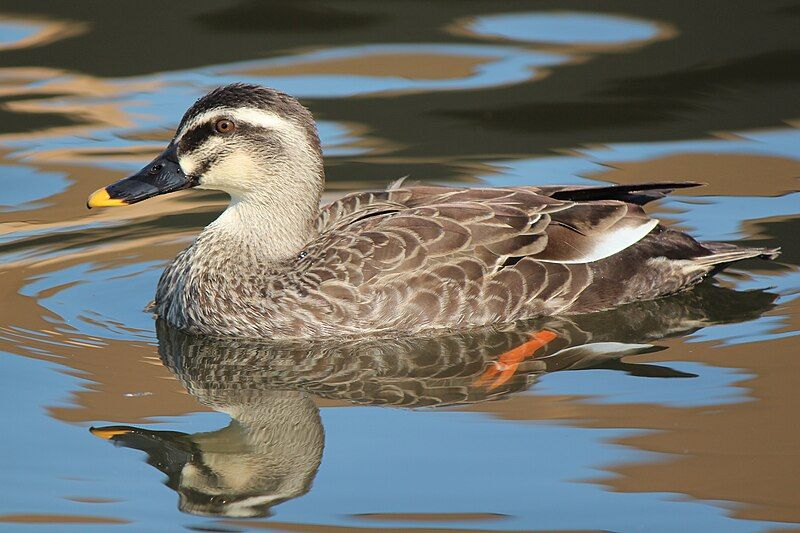
The eastern spot-billed duck, also known as the Chinese spot-billed duck, is a species of dabbling duck that can be found in East and Southeast Asia.
This species was once thought to be a subspecies of the Indian spot-billed duck, and both were referred to as the spot-billed duck. The name of this species is derived from a yellow spot located on its bill.
This species can be found in the wetlands of East and Southeast Asia, where it breeds and forages for food. It is typically seen in large flocks and is known for its distinctive call.
The eastern spot-billed duck has several color variations, ranging from a light brown to a darker shade of brown. Its bill is yellow in color, and its feet are a dull orange or yellow color.
This species is an important part of its local ecosystems and is an important food source for many predators.
| Kingdom | Animalia |
| Phylum | Chordata |
| Class | Aves |
| Order | Anseriformes |
| Family | Anatidae |
| Genus | Anas |
| Species | A. zonorhyncha |
2. Little Grebe
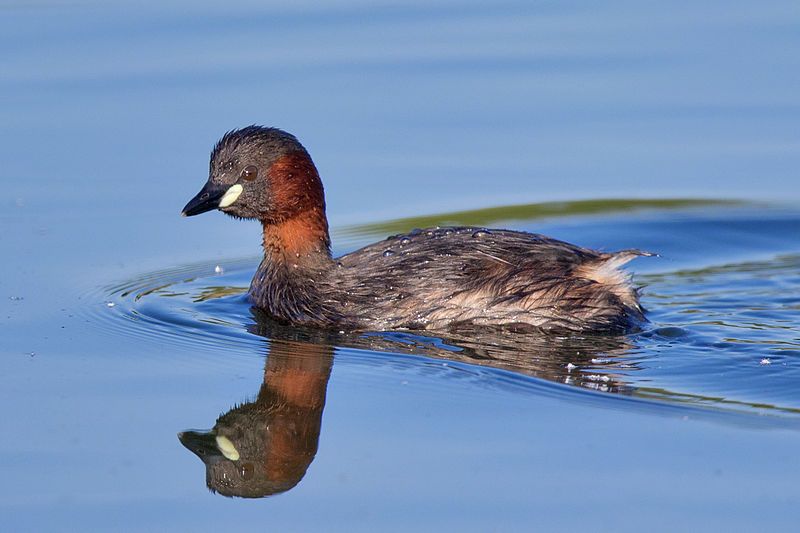
The little grebe, commonly known as dabchick, is a species of water bird that belongs to the grebe family. Its scientific name, Tachybaptus ruficollis, is derived from two Ancient Greek words: takhus, which means “fast”, and bapto, which means “to sink under”.
The species name, ruficollis, is made up of two Latin words, rufus, which translates to “red”, and collis, which is derived from the Latin word for “neck”. Thus, the scientific name of the little grebe can be interpreted as “the fast-sinking, red-necked grebe”.
The little grebe is a small, lightweight bird with an unassuming appearance, but its scientific name perfectly describes its unique characteristics.
| Kingdom | Animalia |
| Phylum | Chordata |
| Class | Aves |
| Order | Podicipediformes |
| Family | Podicipedidae |
| Genus | Tachybaptus |
| Species | T. ruficollis |
3. Bull-Headed Shrike
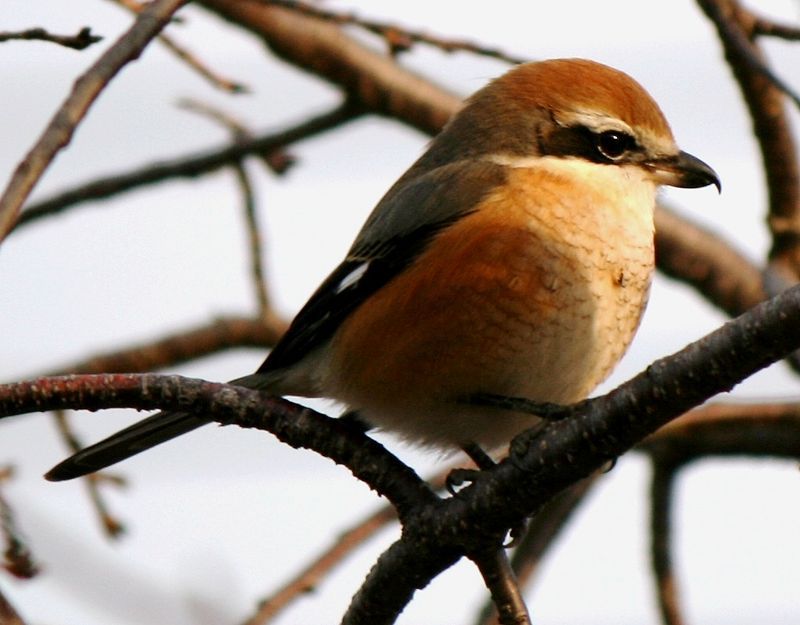
The bull-headed shrike is a species of bird that is found in eastern Asia. It is part of the shrike family, Laniidae, which is known for their bold and predatory habits. The bull-headed shrike can grow up to 19-20 cm in length, making it a relatively small bird.
The male of the species has unique plumage, with a brown crown, white eyebrows, and a black mask. Its back is grey-brown and its wings are dark, with a distinctive white patch.
This white patch is a key identifier of the bull-headed shrike, making it easy to spot amongst other birds in the area. The bull-headed shrike is an interesting species, with its bold and unique plumage, and is an important part of the ecology in eastern Asia.
| Kingdom | Animalia |
| Phylum | Chordata |
| Class | Aves |
| Order | Passeriformes |
| Family | Laniidae |
| Genus | Lanius |
| Species | L. bucephalus |
4. Little Ringed Plover
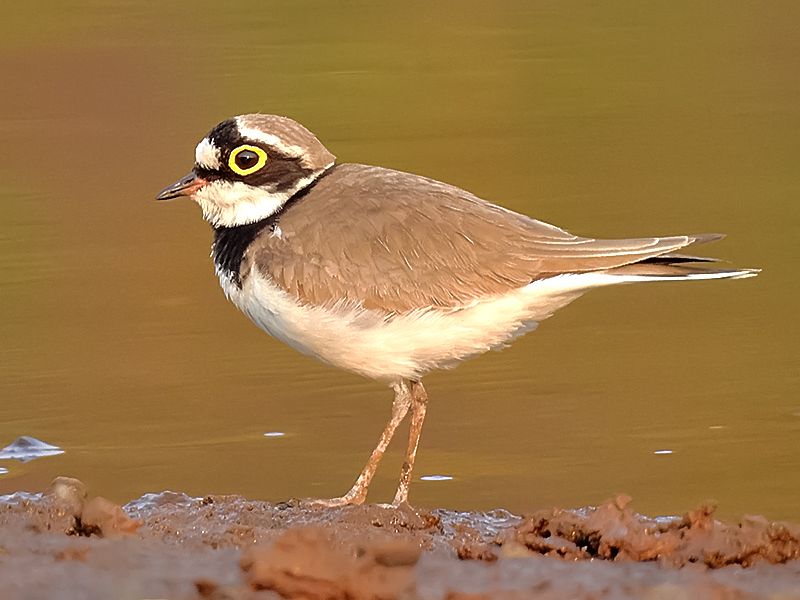
The little ringed plover is a type of small plover, distinguished by its genus name Charadrius. The term Charadrius is derived from Late Latin and is mentioned in the fourth-century Vulgate Bible.
It is believed to have been taken from the Ancient Greek word ‘kharadrios’, which was used to describe a bird found in river valleys. This small species of bird, the little ringed plover, is known to inhabit such areas.
It is usually seen foraging for food in the shallow waters of rivers, lakes, and marshes. The little ringed plover is a species of shorebird that is found all over the world, and it lives in many different habitats, from coastal areas to inland wetlands.
Its diet consists mainly of insects, small crustaceans, and mollusks, which it searches for in the mud and shallow water.
| Kingdom | Animalia |
| Phylum | Chordata |
| Class | Aves |
| Order | Charadriiformes |
| Family | Charadriidae |
| Genus | Charadrius |
| Species | C. dubius |
5. Black-Headed Gull
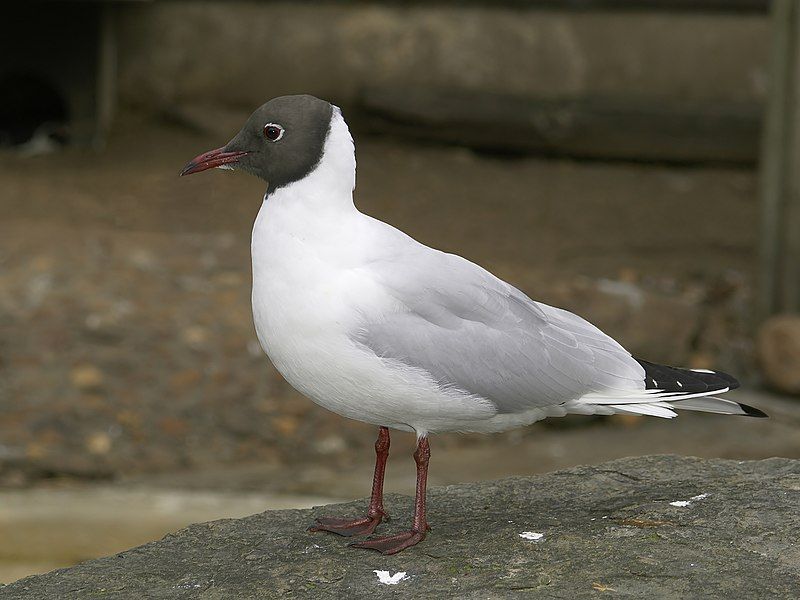
The black-headed gull is a species of small gull that breeds in the Palearctic region, which encompasses Europe, as well as coastal areas of eastern Canada.
Most of the population of this species migrates southward for the winter, but some birds stay in the milder areas of Western Europe. These birds have blackheads, which is how they got their name, as well as gray to black wings and a white body.
They can be found in coastal areas, as well as inland, and they feed on a variety of food, including fish, insects, and even carrion. They are often found in large flocks, where they can communicate with one another and coordinate their movements.
Black-headed gulls are known for their remarkable intelligence, and they have been observed working together to get food, such as herring. They are also very social, and they will often travel in large groups of up to several hundred birds.
Black-headed gulls are an important species in the ecosystems they inhabit, and they help to control insect populations and other pests.
| Kingdom | Animalia |
| Phylum | Chordata |
| Class | Aves |
| Order | Charadriiformes |
| Family | Laridae |
| Genus | Chroicocephalus |
| Species | C. ridibundus |
6. Great Spotted Woodpecker
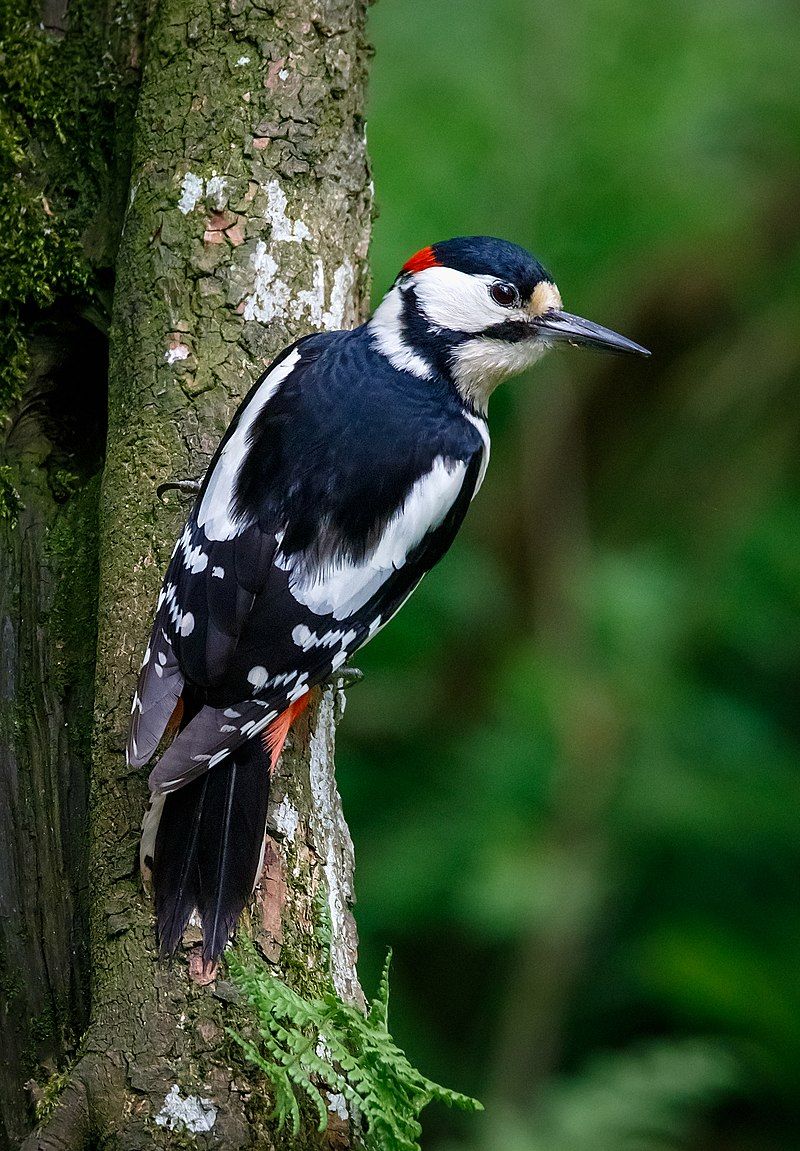
The great spotted woodpecker is a distinctive bird found across the Palearctic region, which includes parts of North Africa. It has a medium-sized body with black and white pied plumage and a red patch on the lower belly.
Male and young birds are further distinguished by having red markings on either the neck or head. This species is widespread across the Palearctic and is found in many different habitats, such as deciduous and coniferous forests, parks, and gardens.
It is a common bird, and can often be seen hammering on trees to find food and excavating cavities in which to nest. The great spotted woodpecker is a familiar sight and is often heard before it is seen, due to its loud call.
| Kingdom | Animalia |
| Phylum | Chordata |
| Class | Aves |
| Order | Piciformes |
| Family | Picidae |
| Genus | Dendrocopos |
| Species | D. major |
7. Grey Heron
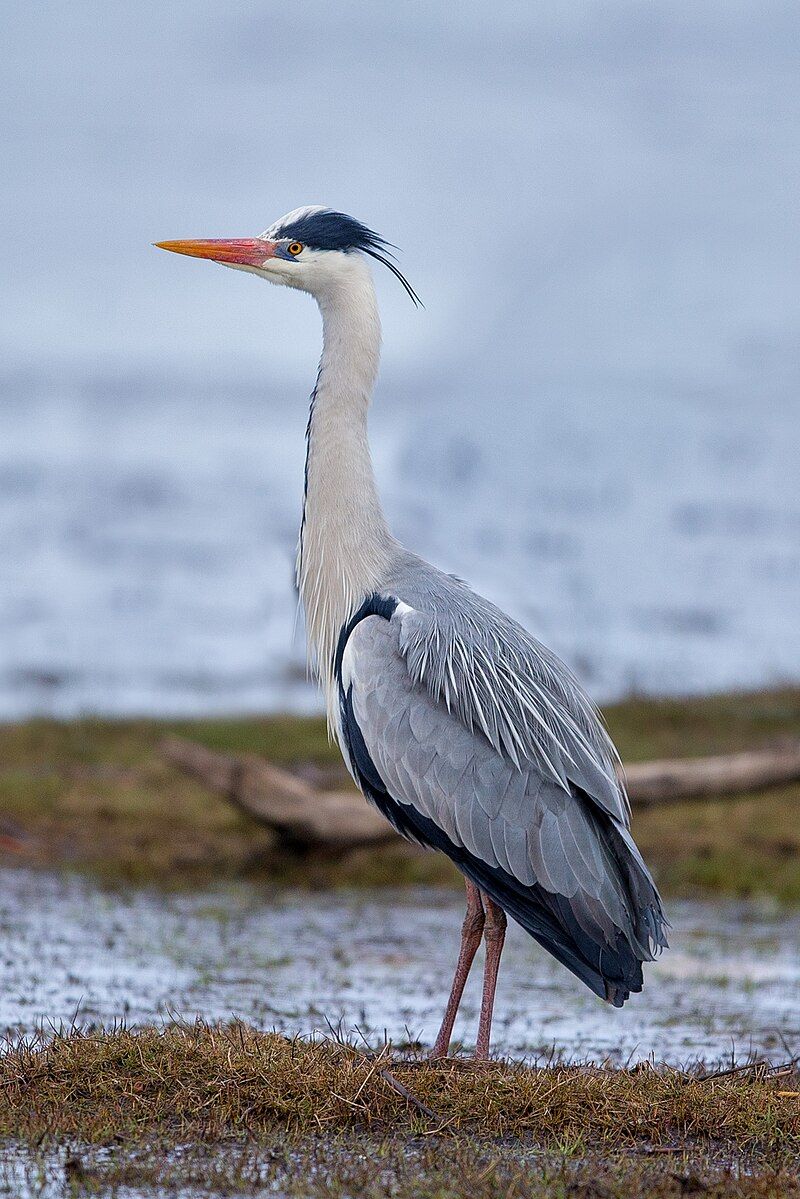
The grey heron is an elegant wading bird belonging to the heron family, Ardeidae. It is native to temperate regions of Europe, Asia, and parts of Africa.
The grey heron is an adaptable species, with some populations remaining in their breeding grounds year-round, while others from more northern regions migrate south for the winter.
This species is often seen perched on the edge of a water body or wading through shallow waters in search of food. With its long legs and powerful beak, it is an expert fisher, snatching up fish, amphibians, and other aquatic creatures with ease.
The grey heron is a beautiful sight to behold, and its graceful movements are a sight to behold.
| Kingdom | Animalia |
| Phylum | Chordata |
| Class | Aves |
| Order | Pelecaniformes |
| Family | Ardeidae |
| Genus | Ardea |
| Species | A. cinerea |
8. Little Egret
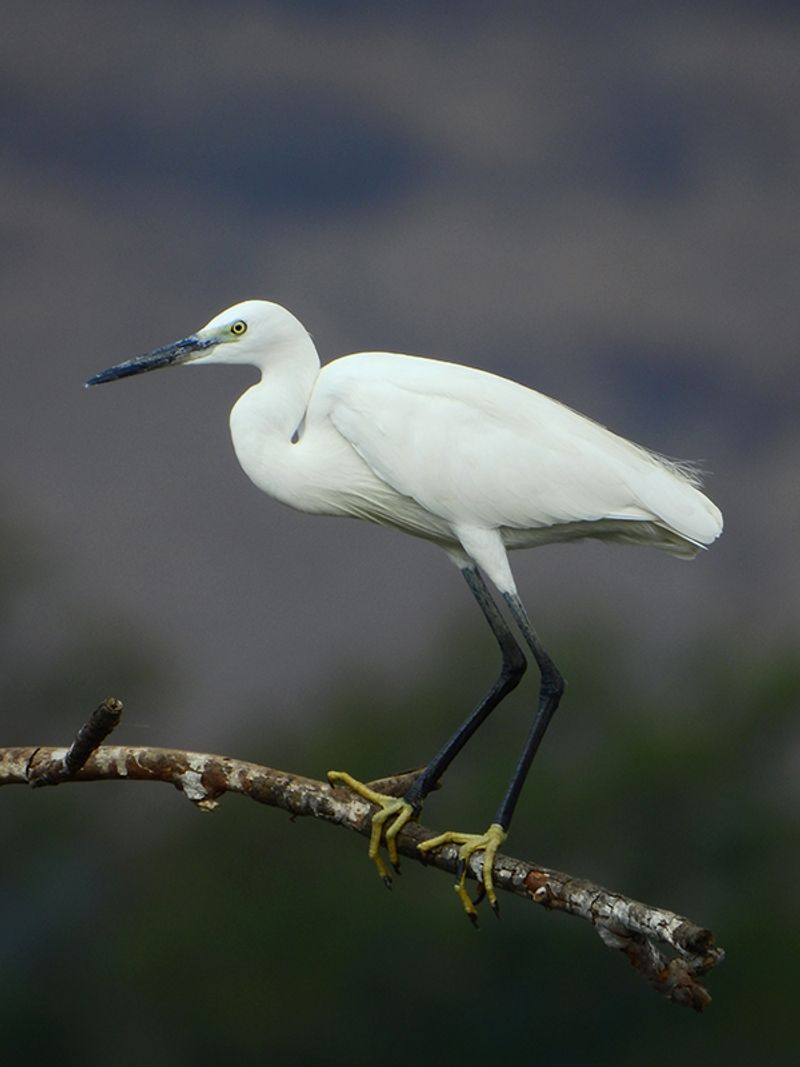
The little egret is a species of small heron that belongs to the Ardeidae family. It is a white bird that has a slender black beak, long black legs, and, in the western race, yellow feet.
This bird lives both on land and in shallow water, where it feeds on a variety of small creatures. This species of bird is known to be an aquatic forager, which means it feeds both on land and in shallow water. It has a distinct diet that consists of small animals and insects.
The little egret is not only known for its diet but also for its striking appearance. Its white color contrasts with its black beak, long black legs, and yellow feet.
This creates an interesting visual effect, which is why the little egret is an increasingly popular species of bird.
| Kingdom | Animalia |
| Phylum | Chordata |
| Class | Aves |
| Order | Pelecaniformes |
| Family | Ardeidae |
| Genus | Egretta |
| Species | E. garzetta |
9. Barn Swallow
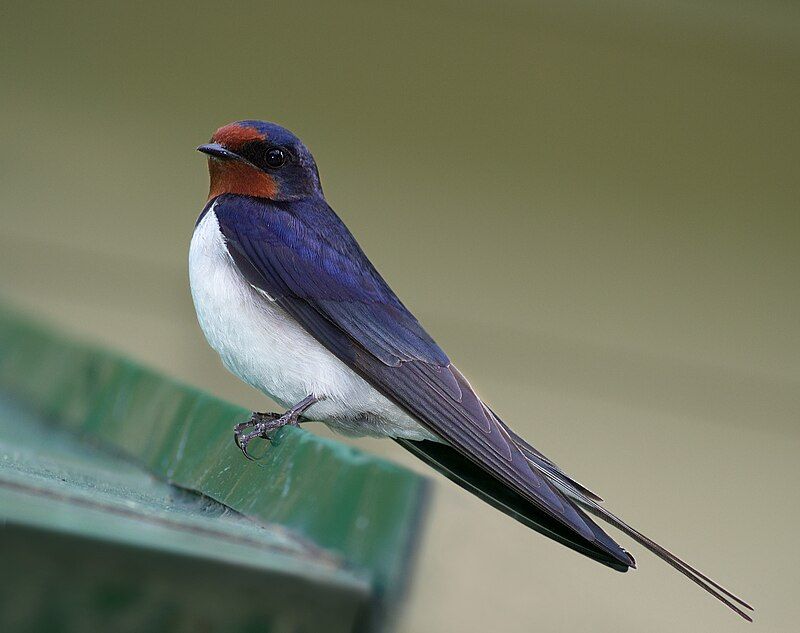
The barn swallow is an incredibly impressive species of bird. Its natural range spans over 251 million square kilometres globally, making it the most widespread species of swallow in the world.
This is an extraordinary feat, especially considering that it is a passerine bird, a group of species that is usually confined to much smaller ranges. The barn swallow is a beautiful bird, easily recognizable by its blue upperparts and long, deeply forked tail.
Its tail is particularly striking and can be seen flicking and twitching as the bird flies. This adaptation helps it to navigate through the air with greater agility and precision, allowing it to make the most of its expansive range.
The barn swallow is a remarkable species of bird, and its impressive range is a testament to its incredible adaptability and resilience. It is a species that is beloved by many and is sure to remain a presence in our skies for many years to come.
| Kingdom | Animalia |
| Phylum | Chordata |
| Class | Aves |
| Order | Passeriformes |
| Family | Hirundinidae |
| Genus | Hirundo |
| Species | H. rustica |
10. Great-Crested Grebe
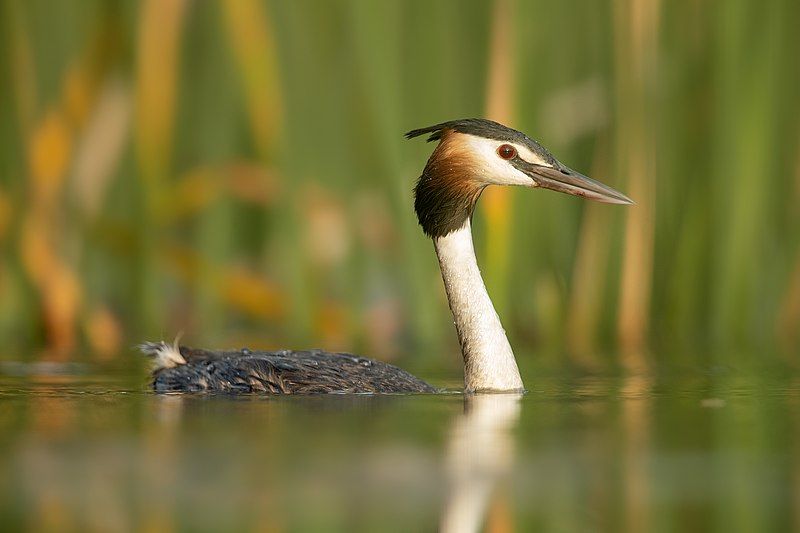
The great crested grebe is an aquatic bird that belongs to the grebe family of water birds. It is a fairly large bird, with a body size of up to about 50 cm long. It has a long bill and a distinctive black-and-white striped head and neck.
Its wings are short and rounded, and its feet are webbed, enabling it to swim easily. The great crested grebe is well-known for its elaborate courtship displays, which it performs during the breeding season.
The male grebe performs an elaborate dance composed of head-shaking, bill-dipping, and preening. The male then presents a piece of vegetation to the female as a sign of courtship.
The female responds by swimming around the male and then finally accepting the vegetation as a sign of acceptance. This courtship ritual is often accompanied by a special courtship call uttered by both sexes.
The great crested grebe is an important species for conservationists, as it is a species of least concern and its population is stable.
| Kingdom | Animalia |
| Phylum | Chordata |
| Class | Aves |
| Order | Podicipediformes |
| Family | Podicipedidae |
| Genus | Podiceps |
| Species | P. cristatus |
11. Black-Tailed Gull
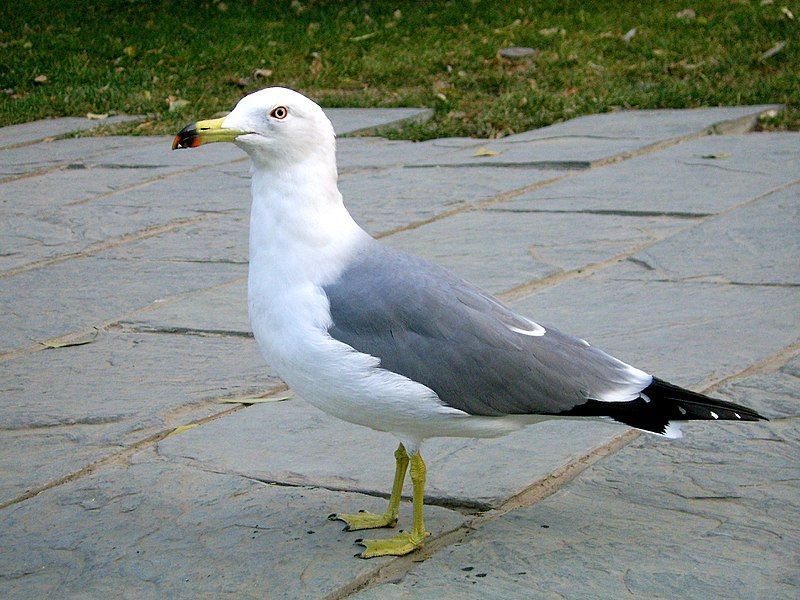
The black-tailed gull, also known as the black-tailed kittiwake, is a species of gull found along the shorelines of East Asia. This medium-sized gull has a black tail, a black bill, and a white head. Its wings are black with white spots, and its legs are black.
The black-tailed gull is a coastal species, usually found near rocky islands and beaches. It is an opportunistic feeder and will scavenge from shorelines, feed on fish, and even scavenge from boats. It is a social bird, often gathering in large flocks at breeding colonies.
It is not migratory but will disperse widely during the winter months. During summer, they breed in colonies, laying two to three eggs in a nest made of seaweed and sticks. The chicks are tended by both parents and will fledge in about five weeks.
The black-tailed gull is an important species for the local shoreline ecosystem and helps to control fish and crustacean populations.
| Kingdom | Animalia |
| Phylum | Chordata |
| Class | Aves |
| Order | Charadriiformes |
| Family | Laridae |
| Genus | Larus |
| Species | L. crassirostris |
12. Grey-Headed Lapwing
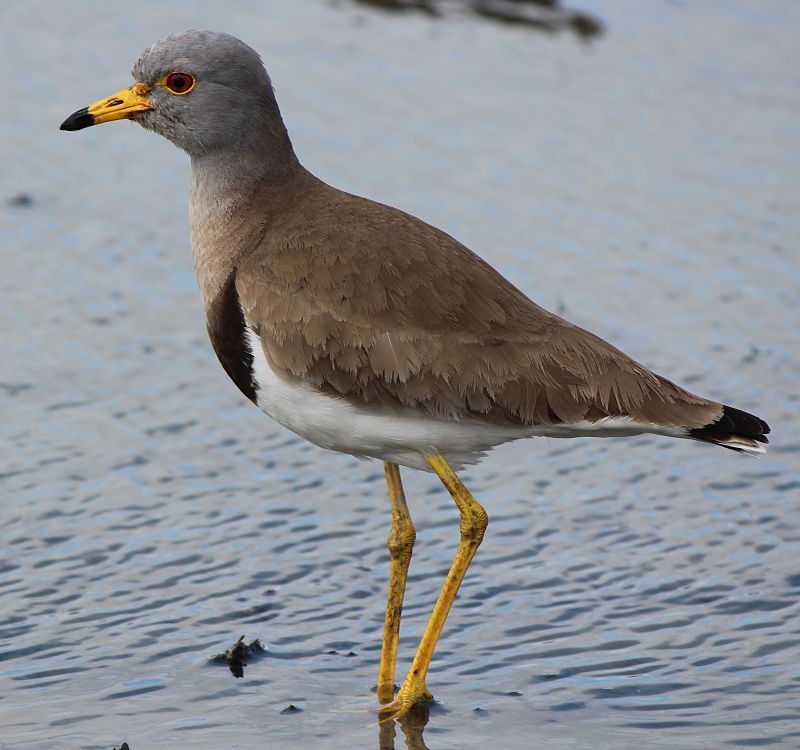
The Grey-headed Lapwing is a species of lapwing bird belonging to the family Charadriidae. It is found mainly in northeast China and Japan and is a migratory species.
During the breeding season, which occurs from April to August, the Grey-headed Lapwing can be found in northeast China and Japan.
During the winter months, the mainland population of the Grey-headed Lapwing migrates to northeastern India, where it can be found in northern Southeast Asia, including Cambodia.
In addition, the Japanese population of the Grey-headed Lapwing migrates to southern Honshū, which is the largest of the Japanese islands. The Grey-headed Lapwing is a medium-sized wader with a grey head, white belly, and white wing patches.
It has a black neck and chest and a white line above the eye. The Grey-headed Lapwing is a ground-dwelling species which feeds mainly on insects, small invertebrates, and plant matter.
It nests on the ground, usually in open grassland or near wetlands. The Grey-headed Lapwing is listed as Near Threatened by the International Union for Conservation of Nature (IUCN) due to its declining population.
This is mainly due to habitat degradation, caused by human activities such as land conversion to croplands and grazing.
Conservation efforts are underway to protect the species and its habitats, such as the establishment of protected areas and the implementation of sustainable agriculture practices.
| Kingdom | Animalia |
| Phylum | Chordata |
| Class | Aves |
| Order | Charadriiformes |
| Family | Charadriidae |
| Genus | Vanellus |
| Species | V. cinereus |
13. Taiga Bean Goose
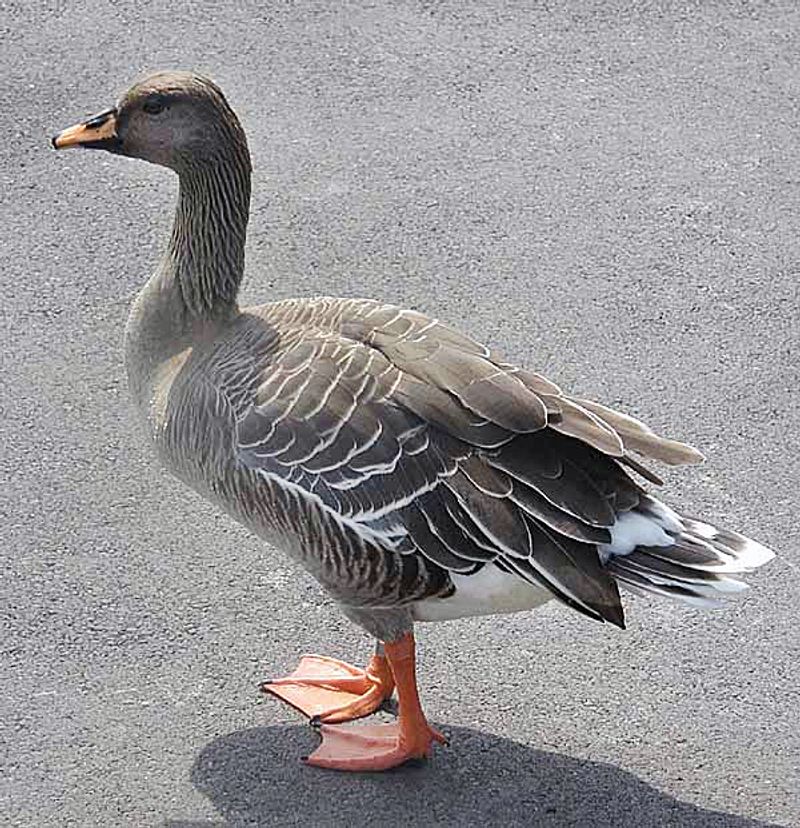
The taiga bean goose is a species of goose that breeds in northern Europe and Asia. This species, along with the tundra bean goose, is considered by some to be distinct enough to be classified as two separate species.
The American Ornithological Society and the International Ornithologists’ Union recognize them as distinct species, with the former referring to them as the taiga bean goose and the latter as the tundra bean goose.
However, other authorities, such as the International Union for Conservation of Nature, consider them to be a single species. This distinction is largely based on their physical characteristics and habitat preferences.
The taiga bean goose is a medium to large-sized goose, typically measuring between 42-58cm in length and weighing between 0.7-2.2kg. It has a black bill and black legs, and its plumage is a warm brown or grey colour.
It is the more migratory of the two species, typically traveling south from its breeding grounds in winter months. The tundra bean goose, on the other hand, is slightly larger, measuring between 45-60cm in length and weighing between 0.9-2.7kg.
It has a pink bill and yellow legs, and its plumage is a cooler grey or brown colour. This species is generally sedentary, staying close to its breeding grounds year-round. The two species also differ in their vocalizations and behavior.
The taiga bean goose has a higher-pitched call than the tundra bean goose and is more likely to be found in flocks.
In contrast, the tundra bean goose has a deeper call and is more likely to be found alone or in pairs. Overall, the taiga bean goose and the tundra bean goose have enough morphological, behavioral, and habitat differences to be considered two distinct species by some authorities.
Nevertheless, the debate over their classification is ongoing, and there is still no consensus among experts.
| Kingdom | Animalia |
| Phylum | Chordata |
| Class | Aves |
| Order | Anseriformes |
| Family | Anatidae |
| Genus | Anser |
| Species | A. fabalis |
14. Indian Spot-Billed Duck
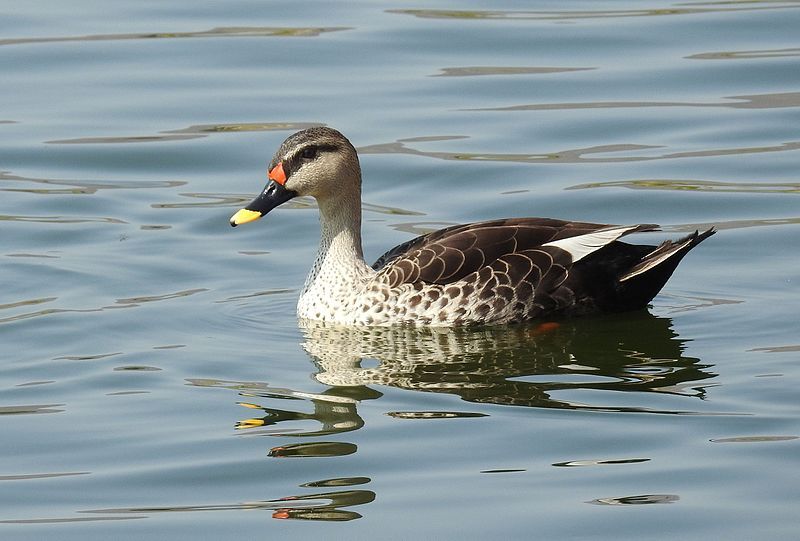
The Indian spot-billed duck is a type of duck that is native to the Indian subcontinent. It is a large dabbling duck, meaning that it prefers to feed in shallow water. The duck is non-migratory, meaning that it does not migrate from one area to another.
Instead, it remains in freshwater wetlands, where it breeds and raises its young. The name of this species of duck is derived from the red spot that can be found at the base of the bill of the ducks found in the mainland Indian population.
This red spot is not found in other populations of the species, making it a distinguishing feature of the Indian spot-billed duck.
| Kingdom | Animalia |
| Phylum | Chordata |
| Class | Aves |
| Order | Anseriformes |
| Family | Anatidae |
| Genus | Anas |
| Species | A. poecilorhyncha |
Conclusion
Tochigi is a wonderful place to see birds, both native and migratory. With its many rivers, lakes, and mountains, it provides a variety of habitats that attract a wide variety of species.
Bird watching in Tochigi is a great way to spend a day, and visitors can enjoy the beauty of nature while learning more about the birds that inhabit the area.